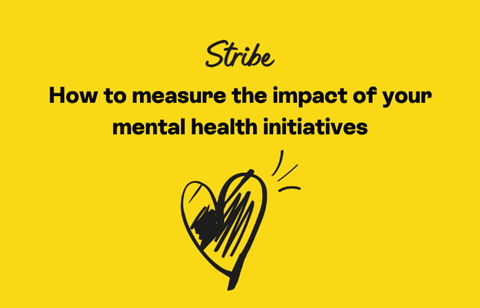
Measuring the impact of mental health initiatives is crucial because it allows you to show your genuine commitment to employee wellbeing and understand the tangible outcomes.
Taking the time to measure your wellbeing policies properly will help you to fine-tune strategies, offer sincere support to your workforce and cultivate a compassionate environment where employees feel valued, heard, and encouraged to thrive.
Step one – Outline your objectives
Goals will guide your wellbeing initiatives, ensuring that you’re not just collecting data for the sake of it, but working toward meaningful outcomes.
Defining your objectives means setting a clear intention for what you want to achieve through your mental health programs. Are you aiming to reduce workplace stress, increase employee engagement, or lower absenteeism rates?
Establishing specific, measurable, and realistic goals allows you to track progress effectively and tailor your initiatives to address the unique needs of your workforce.
Step two – Select metrics and indicators
With your objectives and goals firmly in place, the next step in measuring the impact of your mental health initiatives is choosing the right metrics and indicators.
Consider metrics that reflect the wellbeing of your employees, such as stress levels, satisfaction, and absenteeism. Indicators like employee turnover, participation in wellbeing programs, and self-reported feelings of mental health can also provide valuable insights.
Remember that these metrics should not only be quantitative but also qualitative, as mental health is a nuanced aspect of wellbeing that can’t be fully captured by numbers alone.
Step three – Gather feedback through surveys (pre and post initiatives)
To truly understand the impact of your mental health initiatives, it’s imperative to gather direct feedback from your employees – pre and post your wellbeing initiatives.
Anonymous surveys are a powerful tool in this regard because they allow your workforce to express their genuine thoughts, emotions, and experiences.
Surveys can be designed to assess various aspects of your initiatives, from program effectiveness to overall employee wellbeing. When crafting survey questions, it’s essential to strike a balance between quantitative and qualitative enquiries. This approach will provide both data-driven insights and personal narratives, painting a comprehensive picture of your employees’ mental health journey.
We recommend getting in touch with survey software experts (like our team at Stribe) who can help you make the most of employee feedback and survey tools.
Step four – Analyse and share the data
The final step will be to analyse the data you’ve gather via surveys. Once you’ve done so, it is vital to share the results will everyone involved, especially your employees.
Transparency in data sharing shows your commitment to addressing mental health challenges openly and collaboratively. When employees see that their wellbeing is not just a statistic but a top priority, it can enhance their trust in the organisation.
Furthermore, sharing data creates a sense of ownership and involvement. When employees are aware of the results, they become stakeholders in the journey to improve their own mental health and that of their colleagues.
What’s also crucial to understand is that sharing data isn’t an endpoint but the beginning of meaningful changes. Taking action based on the insights you find will be the most important stage to show your employees you truly care for their wellbeing and are committed to ongoing positive change.
When people are heard, teams are happy.
Stribe makes it easier for business leaders and HR teams to support the engagement and wellbeing of their employees.
To learn more about Stribe and how our employee engagement platform can help your team, visit stribehq.com.












